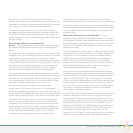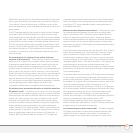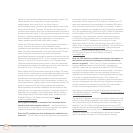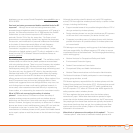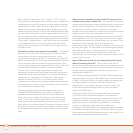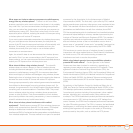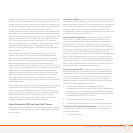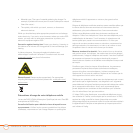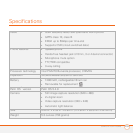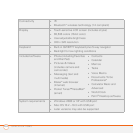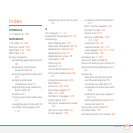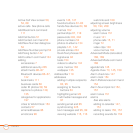
REGULATORY INFORMATION
257
emissions of the phone. FCC measures the Specific Absorption Rate
(SAR) of the phone, following a very rigorous testing protocol. As is
true for nearly any scientific measurement, there is a possibility that
the test measurement may be less than or greater than the actual RF
emitted by the phone. This difference between the RF test
measurement and actual RF emission is because test measurements
are limited by instrument accuracy, because test measurement and
actual use environments are different, and other variable factors. This
inherent variability is known as “measurement uncertainty.” When
FCC conducts post-grant testing of a cell phone, FCC takes into
account any measurement uncertainty to when determining whether
regulatory action is appropriate. This approach ensures that
when FCC takes regulatory action, it will have a sound, defensible
scientific basis.
FDA scientific staff reviewed the methodology used by FCC to
measure cell phone RF, and agreed it is an acceptable approach,
given our current understanding of the risks presented by cellular
phone RF emissions. RF emissions from cellular phones have not
been shown to present a risk of injury to the user when the
measured SAR is less than the safety limits set by FCC (an SAR of 1.6
w/kg). Even in a case where the maximum measurement uncertainty
permitted by current measurement standards was added to the
maximum permissible SAR, the resulting SAR value would be well
below any level known to produce an acute effect. Consequently,
FCC's approach with measurement uncertainty will not result in
consumers being exposed to any known risk from the RF emitted by
cellular telephones.
FDA will continue to monitor studies and literature reports concerning
acute effects of cell phone RF, and concerning chronic effects of
long-term exposure to cellular telephone RF (that is, the risks from
using a cell phone for many years). If new information leads FDA to
believe that a change to FCC's measurement policy may be
appropriate, FDA will contact FCC and both agencies will work
together to develop a mutually-acceptable approach.
Static Electricity, ESD, and Your Palm
®
Device
Electrostatic discharge (ESD) can cause damage to electronic devices
if discharged into the device, so you should take steps to avoid such
an occurrence.
Description of ESD Static electricity is an electrical charge caused by
the buildup of excess electrons on the surface of a material. To most
people, static electricity and ESD are nothing more than annoyances.
For example, after walking over a carpet while scuffing your feet,
building up electrons on your body, you may get a shock—the
discharge event—when you touch a metal doorknob. This little shock
discharges the built-up static electricity.
ESD-susceptible equipment Even a small amount of ESD can
harm circuitry, so when working with electronic devices, take
measures to help protect your electronic devices, including your
Palm
®
device, from ESD harm. While Palm has built protections
against ESD into its products, ESD unfortunately exists and, unless
neutralized, could build up to levels that could harm your equipment.
Any electronic device that contains an external entry point for
plugging in anything from cables to docking stations is susceptible to
entry of ESD. Devices that you carry with you, such as your Palm
device, build up ESD in a unique way because the static electricity
that may have built up on your body is automatically passed to the
device. Then, when the device is connected to another device such
as a docking station, a discharge event can occur.
Precautions against ESD Make sure to discharge any built-up
static electricity from yourself and your electronic devices before
touching an electronic device or connecting one device to another.
The recommendation from Palm is that you take this precaution
before connecting your Palm device to your computer, placing a
device in a cradle, or connecting it to any other device. You can do
this in many ways, including the following:
• Ground yourself when you’re holding your device by
simultaneously touching a metal surface that is at earth ground.
For example, if your computer has a metal case and is plugged
into a standard three-prong grounded outlet, touching the case
should discharge the ESD on your body.
• Increase the relative humidity of your environment.
• Install ESD-specific prevention items, such as grounding mats.
Conditions that enhance ESD occurrences Conditions that can
contribute to the buildup of static electricity in the environment
include the following:
• Low relative humidity.



